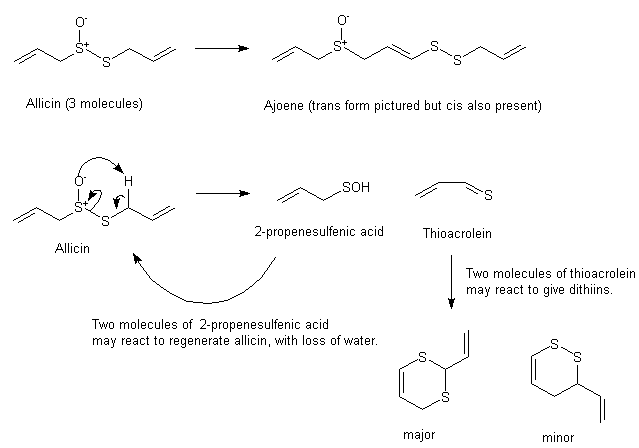Allicin is a powerful antibiotic. It will kill e. coli, streptococcus and others, and is one fiftieth as powerful as penicillin. Garlic has often been used as antithrombotic, and an epidemiological study carried out by Sainini at the University of Poona seems to confirm this. The beneficial properties of garlic have been attributed to allicin itself, and the products that form upon its decay. The diagram below explains a few of these reactions.

Allicin reacts with itself to give ajoene (from ajo spanish for garlic.) It is an antithrombotic agent at least as potent as aspirin. It inhibits the formation of platelets by binding to the fibrinogen receptor, thus rendering it unable to bind to other fibrinogen receptors. Allicin may also decay to give 2-propenesulfenic acid and thioacrolein. Allicin may be regenerated from 2-propenesulfenic acid. Thioacrolein can react with another molecule of thioacrolein via a Diels-Alder reaction to give two dithiins. These are also mildly antithrombitic. It is worth noting that some'garlic pills' do not contain ajoene or many other beneficial compounds. The method of manufacture of these garlic pills uses steam distillation, and this can break down some of the beneficial compounds. So, if you want the health benefits of garlic, you should really eat proper garlic!
| introduction | alliums: their curious properties | a little bit of chemistry |
| Medicinal properties and a bit more chemistry | references and further information | links |